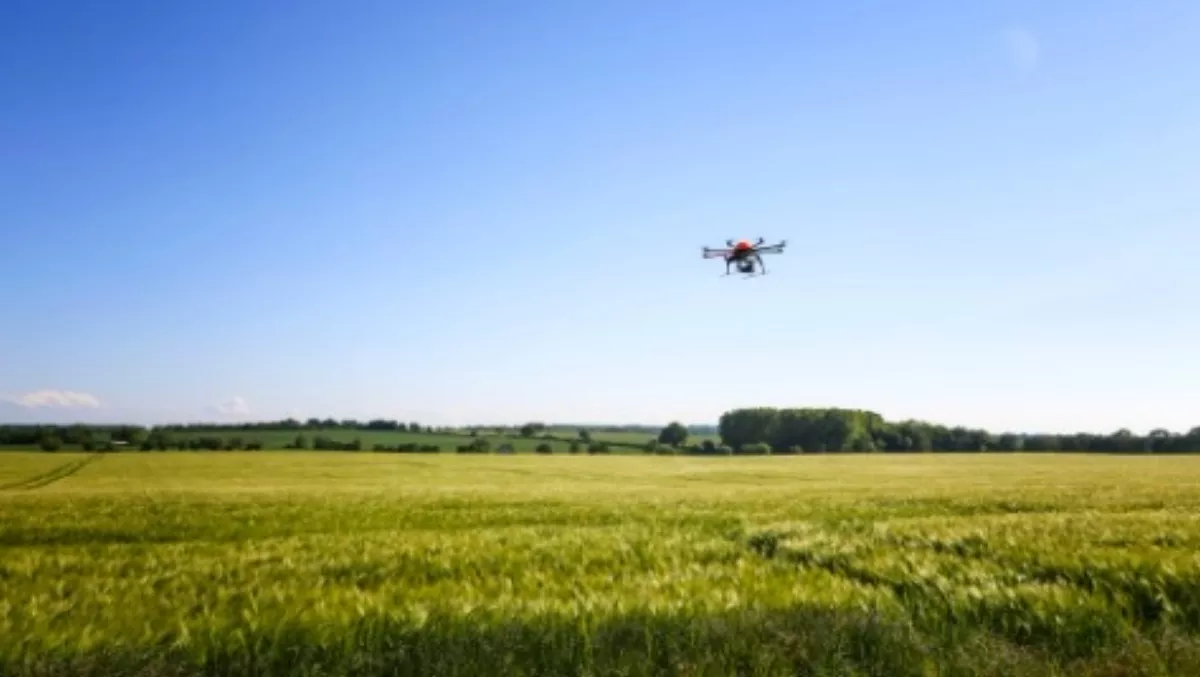
NZ could reap $190M/year benefit becoming first nation to allow beyond-line-of-sight drones
Allowing drones to operate beyond the operator's line of sight could provide economic gains of up to $190 million a year to New Zealand's farming, forestry and energy sectors, according to a report commissioned by Callaghan Innovation.
New Zealand may become the first in the world to have a regulatory framework that lets beyond line of sight (BLOS) flights on unmanned aerial vehicles (UAVs), with the Civil Aviation Authority aiming to get sign off for a new rule from the Transport Minister later this month.
The report by Andrew Shelley Economic Consulting and Aviation Safety Management Systems estimates BLOS UAV operations would provide between $152 million and $190 million in annual revenue increases and cost savings. Benefits could come from improving the frequency and efficiency of farm pasture measurement, early disease detection in forestry, and reduced electricity sector outage times and maintenance needs.
Currently there is little formal regulation for UAVS, with smaller ones falling under model aircraft rules and large ones requiring special authorisation. The CAA's new part 102 rule would allow commercial drone operators to apply on a case-by-case basis for the safe operation of BLOS flights rather than the blanket ban on them that currently applies in other countries.
CAA has already given the University of Canterbury permission for two test zones for long-distance use of UAVs without endangering other airspace users. The Airways Corporation has also set up Airshare, a hub for UAVs to look at ways of integrating commercial drones with other aircraft. It has had 160 controlled airspace flight requests from UAV operators in the past three weeks alone.
Callaghan Innovation's aviation sector manager Chris Thomson said the report shows beyond line of sight makes unmanned aerial flights a lot more economic than staying within line of sight.
'It's not economic to place a person every kilometre to monitor transmission lines down the length of the country or over every four hectares of farmland." he said. "If we can do beyond line of sight safely, then it opens up a whole lot more benefits."
While media attention has focused on novel uses for drones such as delivering parcels or pizzas, Thomson anticipated initial take up in New Zealand would be from the infrastructure sector, which tends to be an earlier adopter of new technology than the agricultural sector.
"The oil and gas sector has huge costs around manned helicopter operations and health and safety risks with those operations, so finding something that is lower risk and lower cost is a huge driver, Thomson said. "I think the infrastructure sector - electricity, oil and gas, bridging and roading, they will be the first ones to jump onto it."
Delivering in rural areas with wide open air spaces is a lot easier to do safely than in built-up urban areas where there are more privacy concerns and more potential for UAVs to fall on people on the ground. Thomson says drone deliveries are much harder to do and are still some years off.
Transpower, owner and operator of the national electricity transmission network, and Hawke's Bay electricity network provider, Unison, have conducted UAV trials for inspecting overhead power lines. Both point to a significant difference between BLOS and LOS operations, with line of sight flights creating little additional value over existing inspection methods.
Transpower estimates it could achieve $1 million of annual gains from more frequent UAV inspections and for substituting a UAV for the helicopters currently used for patrolling the zone protecting the Cook Strait cable. Unison wouldn't provide its costs and benefit analysis for commercial reasons.
The Callaghan report estimated likely electricity distribution benefits ranging from $1.85 million a year for centrally-located UAVs operated by service providers through to $6.62 million if distribution companies had their own UAVs that could identify the cause of outages and monitor storm damage at short notice. It estimated additional benefits to electricity consumers of between $4.46 million to $19.26 million a year from the reduced cost of outages.
Use of BLOS-operated UAVs would enable farm consultants to obtain relevant imagery for a number of farms at once and provide each farmer with the necessary information for active pasture management. The benefits from greater uptake of active pasture management to New Zealand is estimated at over $1 billion per year, the report said.
Within the forestry sector, UAVs have application in cheaper monitoring of forest health, particularly in identifying a range of forest diseases, pests and weeds. The report said although trials are needed to work out the level of control possible, it's reasonable to assume benefits from controlling Dothistroma, one of two common tree diseases, ranging from $46 million to $69 million per year.
Pest infestations also have a significant negative impact on the economics of hardwood plantations which comprise only 2 percent of New Zealand's forest estate. The report found improved pest control could result in potential savings of $26 million per year if hardwood imports were able to be replaced.
(BusinessDesk is funded by Callaghan Innovation to write about the commercialisation of innovation).

